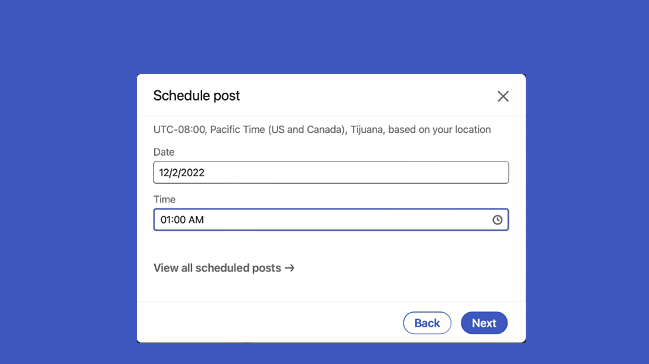TECHNOLOGY
React Native Chart Libraries

Data is the richest currency one can have in today’s time.
It helps companies gain insights into their customers’ preferences, habits, purchasing power, and any other important information that can help businesses improve their performance and optimize their revenues. It can also be beneficial for optimizing internal business processes. However, having a massive chunk of data is not useful, as it can be extremely difficult to comprehend. For this reason, it is important to be able to visualize your data into appealing and easy to understand illustrations such as graphs, line diagrams and other fascinating data visualization formats.
Suppose you are working on a React Native mobile app that requires proper data visualization tools. In that case, you need to hire React Native developers from a trusted and credible IT solutions company with experience in utilizing various React Native Chart Libraries available on the market. Now
Top React Native Chart Libraries

The community of React Native developers is huge and always active. Various users develop many React Native Chart Libraries for aiding React developers with their React charting, and visualization requirements for different React app projects. Here are some of the top React Native Chart Libraries, your React Native developer, should know about –
1. React Native Chart Kit
GitHub – Fork (546) | Star (2.1k) | License (MIT)
React Native Chart Kit is one of the most popular React Native Chart Libraries for creating charts in React Native. They have many chart options such as Line Chart, Pie Chart, Bezier Line Chart, Progress, Contribution Graph and Bar Charts. All the graphs are highly responsive, easy to plug in and available in customizable colours.
2. React Native SVG Charts
GitHub – Fork (312) | Star (2.1k) | License (MIT)
Another famous React Native Chart Library, React Native SVG Charts, makes use of the d3 library for creating their SVG paths and calculating the coordinates. All their charts can be extended with the “decorators” component that helps enhance or stye a chart. It uses the react-native-svg for rendering SVGs and provide users with excellent extensibility. This React chart library comes with Bar Charts, Line Charts, Pie Charts, YAxis, XAxis, StackedBarChart, StackedAreaChart, Area and ProgressCircle chart types.
3. React Native Apache ECharts
GitHub – Fork (483) | Star (3.6k) | License (MIT)
React Native ECharts is a free, open-source and robust charting and visualization library that allows users to integrate highly customizable and interactive charts in their React Native app. This library is based on JavaScript and zrender. ECharts support multi-rendering, cross-platform charts, dynamic data, mobile optimization and better accessibility features.
4. Recharts
GitHub – Fork (1.4k) | Star (17.9k) | License (MIT)
Recharts is one of the oldest and most reliable charting libraries for React. Recharts uses components that are completely presentational because of their declarative nature. Many professionals React developers prefer using Recharts for any React Native charting and data visualization requirements. Recharts comes packed with beautiful charts, native SVG support, declarative components and more.
5. Victory
GitHub – Fork (483) | Star (9.5k) | License (MIT)
Victory is a full-stack modular charting solution with all necessary React Native charting requirements components. It supports cross-platform charting and is fairly straightforward to learn and use. With Victory, you can integrate chart types like bar, candlestick, line and pie charts in your React Native app.
6. React-chartjs-2
GitHub – Fork (993) | Star (4.9k) | License (MIT)
React-chartjs-2 is not much of a charting library, but it is one of the most popular React wrappers and libraries for JS charting. It is a lightweight wrapper that helps developers create responsive components using the HTML5 canvas. The library is easy to use and mainly uses Vue.js and React. It features 6 different charting styles and formats like Line, Doughnut, Pie and Bar Charts.
7. Nivo
GitHub – Fork (809) | Star (9.9k) | License (MIT)
Nivo is more of a React component collection than a charting library. One of the unique aspects of Nivo that makes it a worthy consideration for your React Native app charting requirements is that it supports server-side rendering, which most charting libraries don’t. It comes with many appealing and functional graph and chart templates. Nivo can provide a wide range of HTML, SVG and Canvas Charts in a library.
8. Visx by Airbnb
GitHub – Fork (571) | Star (14.9k) | License (MIT)
Visx is a component library created by Airbnb that combines the benefits of React DOM and D3.js. It is a collection of low-level visualization components that are easily reusable. Low-level visualization helps reduce the bundle size. Visx enables users to create complex visualizations like treemap, chord and more.
9. BizCharts
GitHub – Fork (660) | Star (5.8k) | License (MIT)
Another famous React Native Chart Library, BizCharts, is developed and backed by Alibaba. It has a massive collection of charting libraries with various charting designs. All these charts require minimal coding, making them accessible and usable by React developers of all experience levels. BizCharts also supports ES6 React Syntax and has a stunning template library.
10. React Native Pie Chart
GitHub – Fork (42) | Star (83) | License (MIT)
If you are looking for a specific pie chart library for your React Native app, React Native Pie Chart library is the best solution. It is a simple open-source library that is fairly simple to use. It offers two different variations for displaying data in a pie chart. This library is best for React developers who need to use a pie chart in their app and have a responsibility to keep the overall app bundle size small. With React Native Pie Chart, you can apply custom switches and styles to the two different variations of pie charts that come with this library.
Summing it Up!

These are the top 10 React Native Chart Libraries that can be used for visualizing complex data into appealing and easy to understand charts and graphs, making the app content more user-friendly and helping users get a quick understanding of the data rather than seeing chunks of data that look overwhelming with no analytics possible whatsoever. Make sure your potential React Native developers know these libraries and have proven experience in integrating them in different React Native apps.
Source link
TECHNOLOGY
Next-gen chips, Amazon Q, and speedy S3

AWS re:Invent, which has been taking place from November 27 and runs to December 1, has had its usual plethora of announcements: a total of 21 at time of print.
Perhaps not surprisingly, given the huge potential impact of generative AI – ChatGPT officially turns one year old today – a lot of focus has been on the AI side for AWS’ announcements, including a major partnership inked with NVIDIA across infrastructure, software, and services.
Yet there has been plenty more announced at the Las Vegas jamboree besides. Here, CloudTech rounds up the best of the rest:
Next-generation chips
This was the other major AI-focused announcement at re:Invent: the launch of two new chips, AWS Graviton4 and AWS Trainium2, for training and running AI and machine learning (ML) models, among other customer workloads. Graviton4 shapes up against its predecessor with 30% better compute performance, 50% more cores and 75% more memory bandwidth, while Trainium2 delivers up to four times faster training than before and will be able to be deployed in EC2 UltraClusters of up to 100,000 chips.
The EC2 UltraClusters are designed to ‘deliver the highest performance, most energy efficient AI model training infrastructure in the cloud’, as AWS puts it. With it, customers will be able to train large language models in ‘a fraction of the time’, as well as double energy efficiency.
As ever, AWS offers customers who are already utilising these tools. Databricks, Epic and SAP are among the companies cited as using the new AWS-designed chips.
Zero-ETL integrations
AWS announced new Amazon Aurora PostgreSQL, Amazon DynamoDB, and Amazon Relational Database Services (Amazon RDS) for MySQL integrations with Amazon Redshift, AWS’ cloud data warehouse. The zero-ETL integrations – eliminating the need to build ETL (extract, transform, load) data pipelines – make it easier to connect and analyse transactional data across various relational and non-relational databases in Amazon Redshift.
A simple example of how zero-ETL functions can be seen is in a hypothetical company which stores transactional data – time of transaction, items bought, where the transaction occurred – in a relational database, but use another analytics tool to analyse data in a non-relational database. To connect it all up, companies would previously have to construct ETL data pipelines which are a time and money sink.
The latest integrations “build on AWS’s zero-ETL foundation… so customers can quickly and easily connect all of their data, no matter where it lives,” the company said.
Amazon S3 Express One Zone
AWS announced the general availability of Amazon S3 Express One Zone, a new storage class purpose-built for customers’ most frequently-accessed data. Data access speed is up to 10 times faster and request costs up to 50% lower than standard S3. Companies can also opt to collocate their Amazon S3 Express One Zone data in the same availability zone as their compute resources.
Companies and partners who are using Amazon S3 Express One Zone include ChaosSearch, Cloudera, and Pinterest.
Amazon Q
A new product, and an interesting pivot, again with generative AI at its core. Amazon Q was announced as a ‘new type of generative AI-powered assistant’ which can be tailored to a customer’s business. “Customers can get fast, relevant answers to pressing questions, generate content, and take actions – all informed by a customer’s information repositories, code, and enterprise systems,” AWS added. The service also can assist companies building on AWS, as well as companies using AWS applications for business intelligence, contact centres, and supply chain management.
Customers cited as early adopters include Accenture, BMW and Wunderkind.
Want to learn more about cybersecurity and the cloud from industry leaders? Check out Cyber Security & Cloud Expo taking place in Amsterdam, California, and London. Explore other upcoming enterprise technology events and webinars powered by TechForge here.
TECHNOLOGY
HCLTech and Cisco create collaborative hybrid workplaces

Digital comms specialist Cisco and global tech firm HCLTech have teamed up to launch Meeting-Rooms-as-a-Service (MRaaS).
Available on a subscription model, this solution modernises legacy meeting rooms and enables users to join meetings from any meeting solution provider using Webex devices.
The MRaaS solution helps enterprises simplify the design, implementation and maintenance of integrated meeting rooms, enabling seamless collaboration for their globally distributed hybrid workforces.
Rakshit Ghura, senior VP and Global head of digital workplace services, HCLTech, said: “MRaaS combines our consulting and managed services expertise with Cisco’s proficiency in Webex devices to change the way employees conceptualise, organise and interact in a collaborative environment for a modern hybrid work model.
“The common vision of our partnership is to elevate the collaboration experience at work and drive productivity through modern meeting rooms.”
Alexandra Zagury, VP of partner managed and as-a-Service Sales at Cisco, said: “Our partnership with HCLTech helps our clients transform their offices through cost-effective managed services that support the ongoing evolution of workspaces.
“As we reimagine the modern office, we are making it easier to support collaboration and productivity among workers, whether they are in the office or elsewhere.”
Cisco’s Webex collaboration devices harness the power of artificial intelligence to offer intuitive, seamless collaboration experiences, enabling meeting rooms with smart features such as meeting zones, intelligent people framing, optimised attendee audio and background noise removal, among others.
Want to learn more about cybersecurity and the cloud from industry leaders? Check out Cyber Security & Cloud Expo taking place in Amsterdam, California, and London. Explore other upcoming enterprise technology events and webinars powered by TechForge here.
TECHNOLOGY
Canonical releases low-touch private cloud MicroCloud

Canonical has announced the general availability of MicroCloud, a low-touch, open source cloud solution. MicroCloud is part of Canonical’s growing cloud infrastructure portfolio.
It is purpose-built for scalable clusters and edge deployments for all types of enterprises. It is designed with simplicity, security and automation in mind, minimising the time and effort to both deploy and maintain it. Conveniently, enterprise support for MicroCloud is offered as part of Canonical’s Ubuntu Pro subscription, with several support tiers available, and priced per node.
MicroClouds are optimised for repeatable and reliable remote deployments. A single command initiates the orchestration and clustering of various components with minimal involvement by the user, resulting in a fully functional cloud within minutes. This simplified deployment process significantly reduces the barrier to entry, putting a production-grade cloud at everyone’s fingertips.
Juan Manuel Ventura, head of architectures & technologies at Spindox, said: “Cloud computing is not only about technology, it’s the beating heart of any modern industrial transformation, driving agility and innovation. Our mission is to provide our customers with the most effective ways to innovate and bring value; having a complexity-free cloud infrastructure is one important piece of that puzzle. With MicroCloud, the focus shifts away from struggling with cloud operations to solving real business challenges” says
In addition to seamless deployment, MicroCloud prioritises security and ease of maintenance. All MicroCloud components are built with strict confinement for increased security, with over-the-air transactional updates that preserve data and roll back on errors automatically. Upgrades to newer versions are handled automatically and without downtime, with the mechanisms to hold or schedule them as needed.
With this approach, MicroCloud caters to both on-premise clouds but also edge deployments at remote locations, allowing organisations to use the same infrastructure primitives and services wherever they are needed. It is suitable for business-in-branch office locations or industrial use inside a factory, as well as distributed locations where the focus is on replicability and unattended operations.
Cedric Gegout, VP of product at Canonical, said: “As data becomes more distributed, the infrastructure has to follow. Cloud computing is now distributed, spanning across data centres, far and near edge computing appliances. MicroCloud is our answer to that.
“By packaging known infrastructure primitives in a portable and unattended way, we are delivering a simpler, more prescriptive cloud experience that makes zero-ops a reality for many Industries.“
MicroCloud’s lightweight architecture makes it usable on both commodity and high-end hardware, with several ways to further reduce its footprint depending on your workload needs. In addition to the standard Ubuntu Server or Desktop, MicroClouds can be run on Ubuntu Core – a lightweight OS optimised for the edge. With Ubuntu Core, MicroClouds are a perfect solution for far-edge locations with limited computing capabilities. Users can choose to run their workloads using Kubernetes or via system containers. System containers based on LXD behave similarly to traditional VMs but consume fewer resources while providing bare-metal performance.
Coupled with Canonical’s Ubuntu Pro + Support subscription, MicroCloud users can benefit from an enterprise-grade open source cloud solution that is fully supported and with better economics. An Ubuntu Pro subscription offers security maintenance for the broadest collection of open-source software available from a single vendor today. It covers over 30k packages with a consistent security maintenance commitment, and additional features such as kernel livepatch, systems management at scale, certified compliance and hardening profiles enabling easy adoption for enterprises. With per-node pricing and no hidden fees, customers can rest assured that their environment is secure and supported without the expensive price tag typically associated with cloud solutions.
Want to learn more about cybersecurity and the cloud from industry leaders? Check out Cyber Security & Cloud Expo taking place in Amsterdam, California, and London. Explore other upcoming enterprise technology events and webinars powered by TechForge here.
-

 PPC6 days ago
PPC6 days ago19 Best SEO Tools in 2024 (For Every Use Case)
-

 MARKETING7 days ago
MARKETING7 days agoEcommerce evolution: Blurring the lines between B2B and B2C
-
SEARCHENGINES5 days ago
Daily Search Forum Recap: April 19, 2024
-
SEARCHENGINES6 days ago
Daily Search Forum Recap: April 18, 2024
-

 WORDPRESS6 days ago
WORDPRESS6 days agoHow to Make $5000 of Passive Income Every Month in WordPress
-

 SEO7 days ago
SEO7 days ago2024 WordPress Vulnerability Report Shows Errors Sites Keep Making
-

 WORDPRESS6 days ago
WORDPRESS6 days ago10 Amazing WordPress Design Resouces – WordPress.com News
-

 SEO6 days ago
SEO6 days ago25 WordPress Alternatives Best For SEO













You must be logged in to post a comment Login